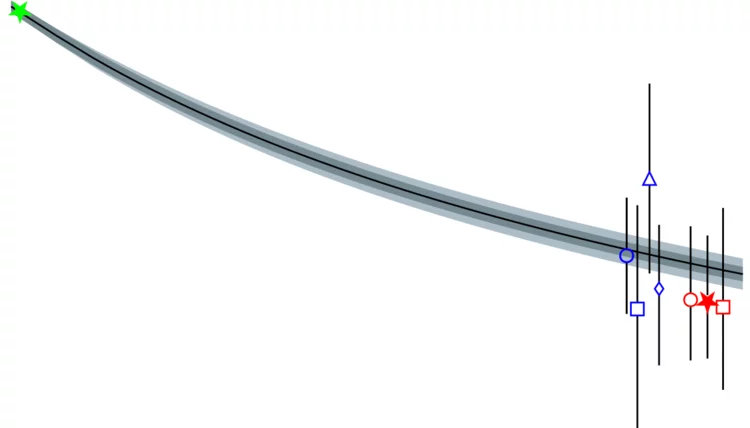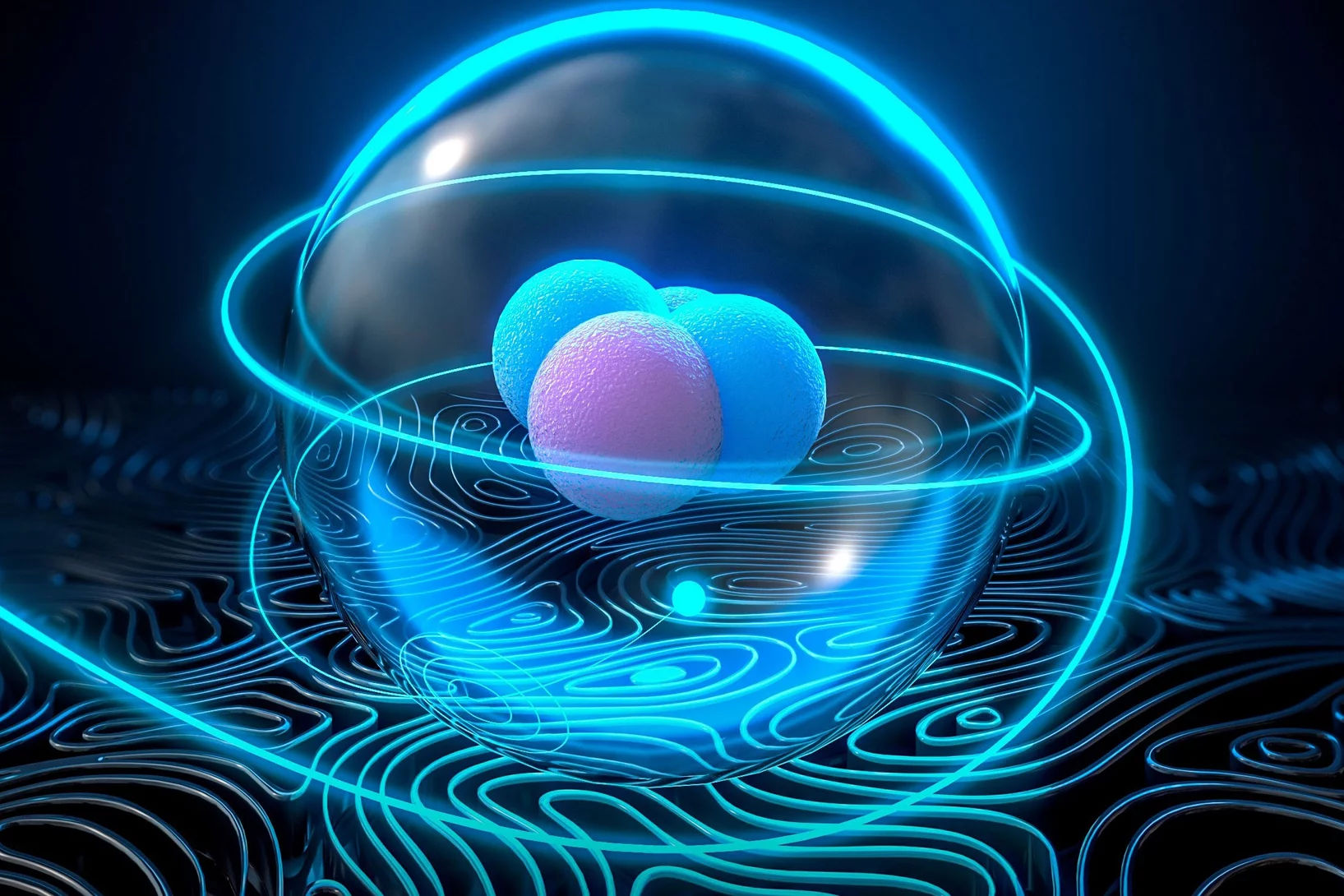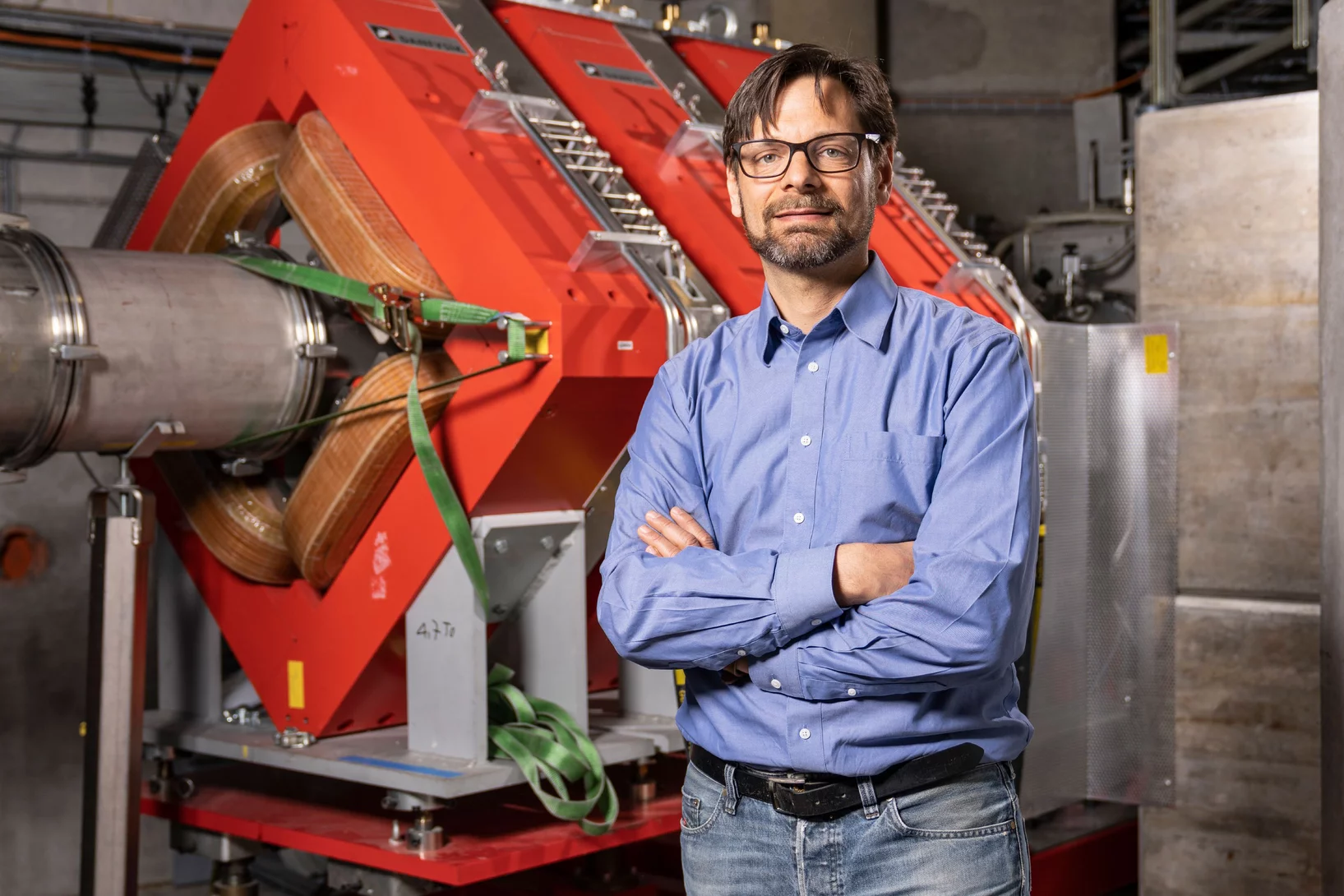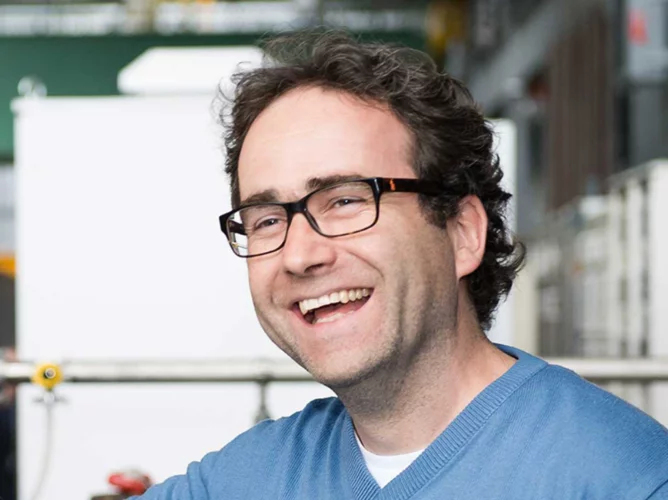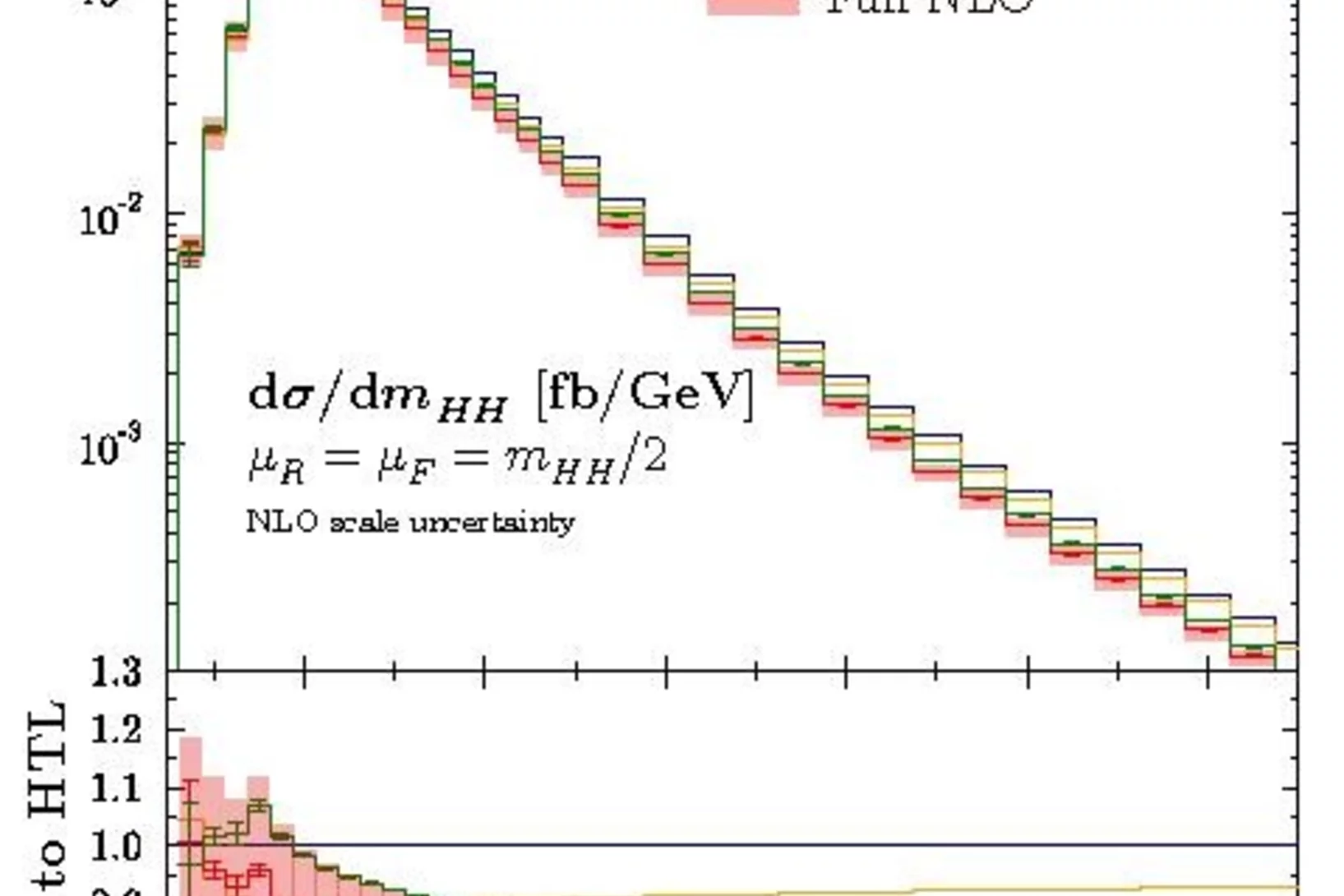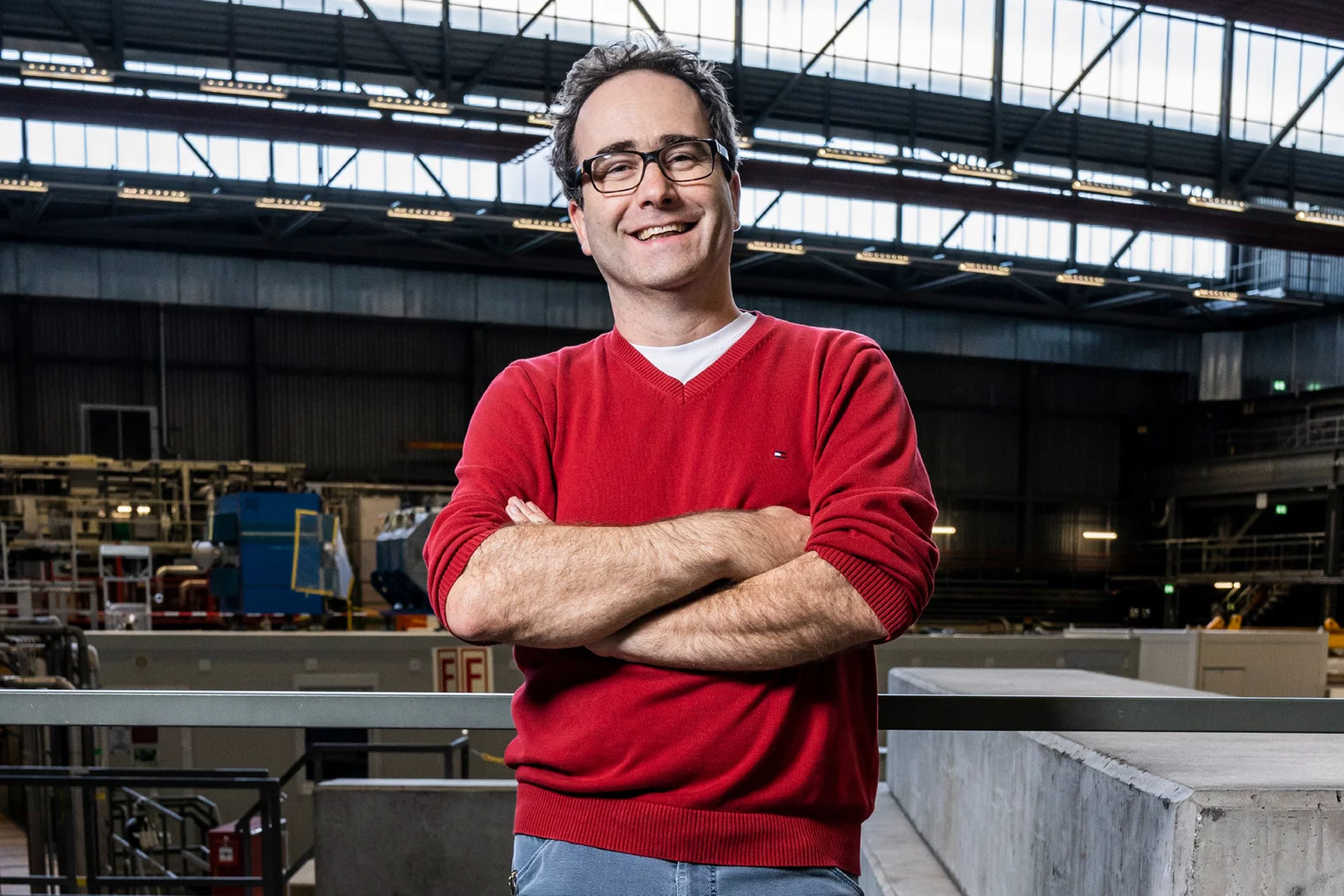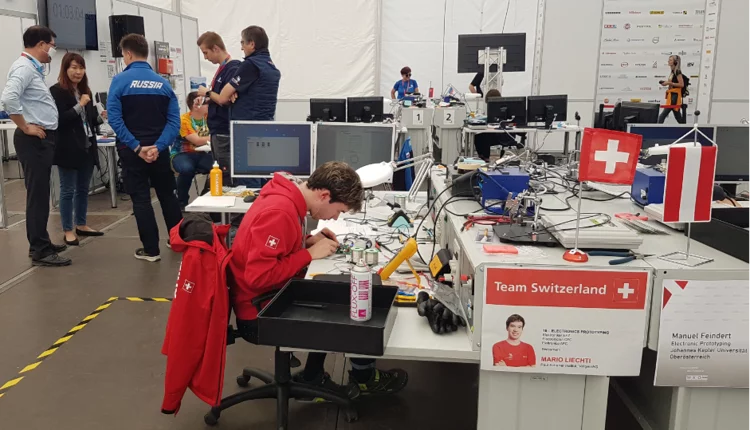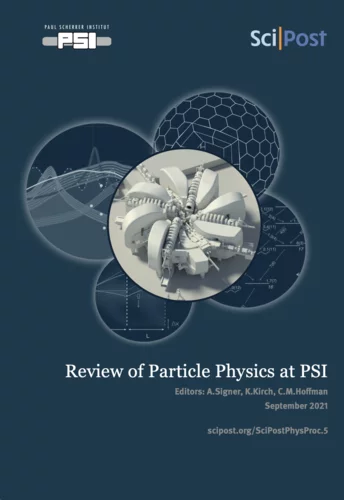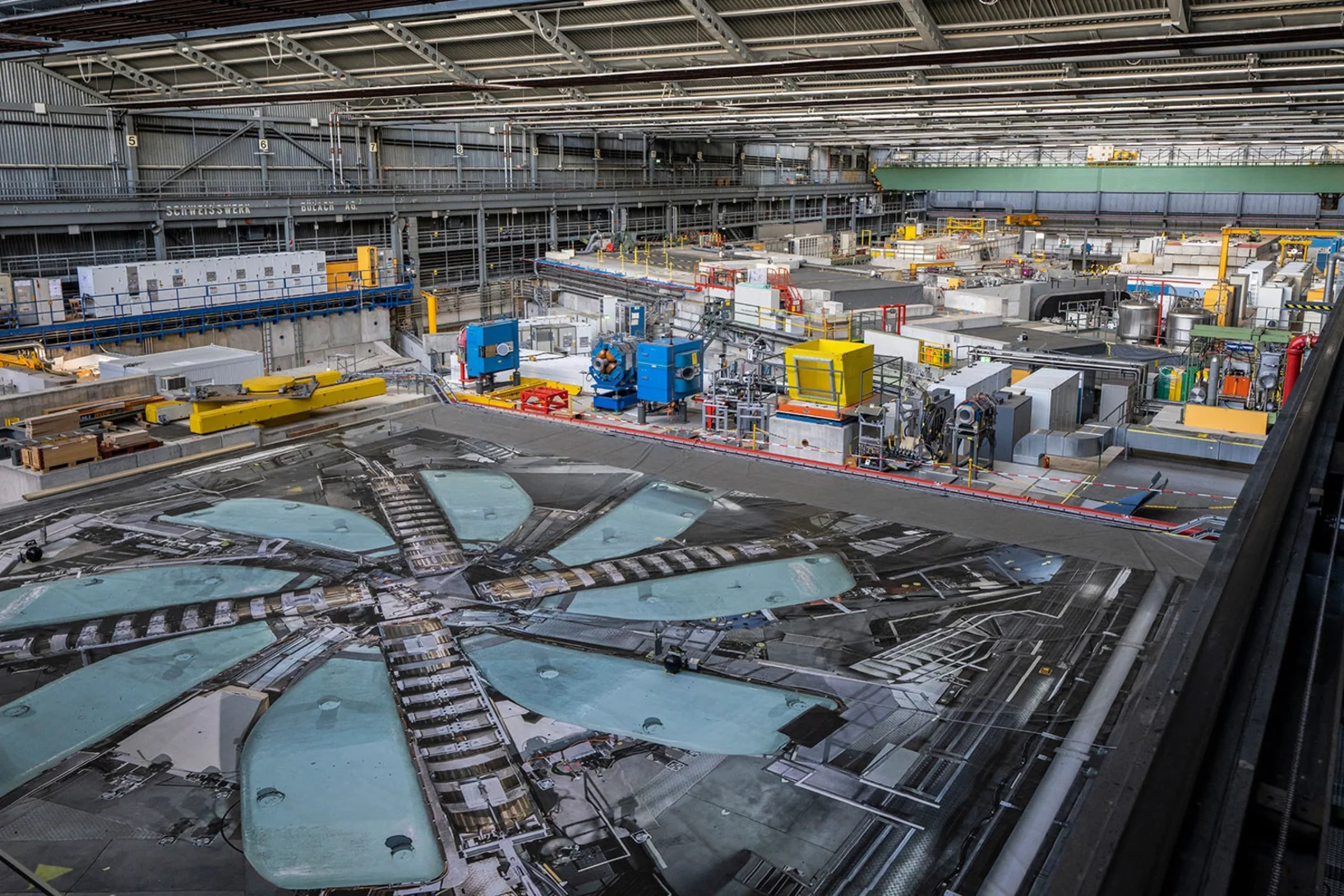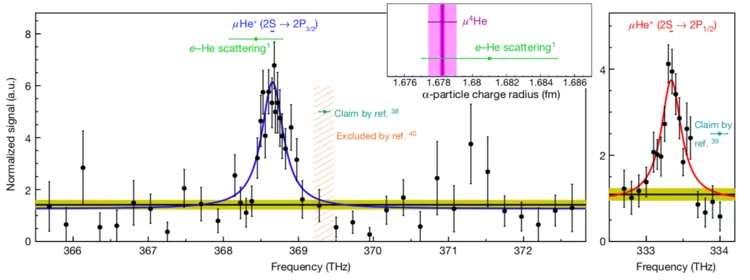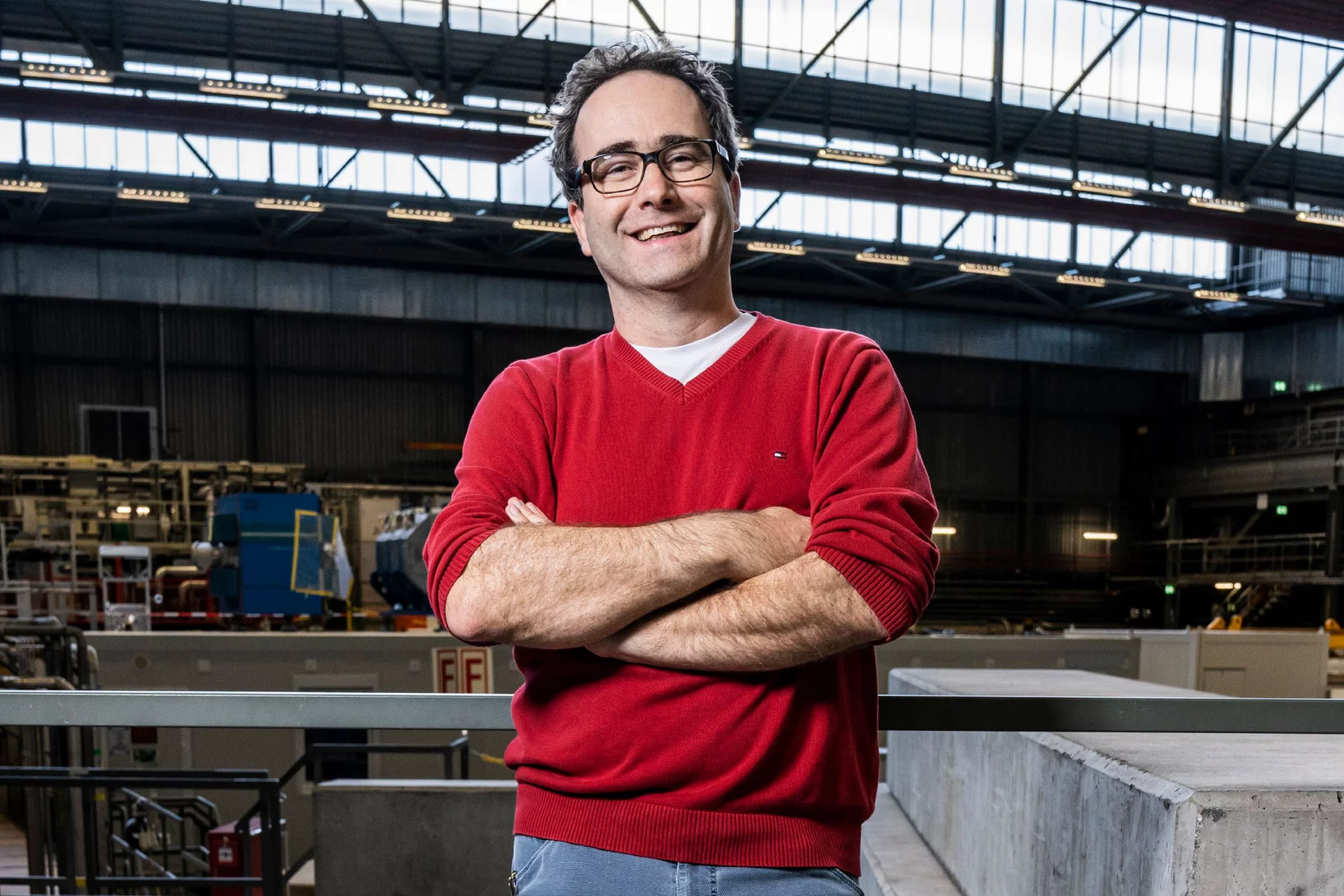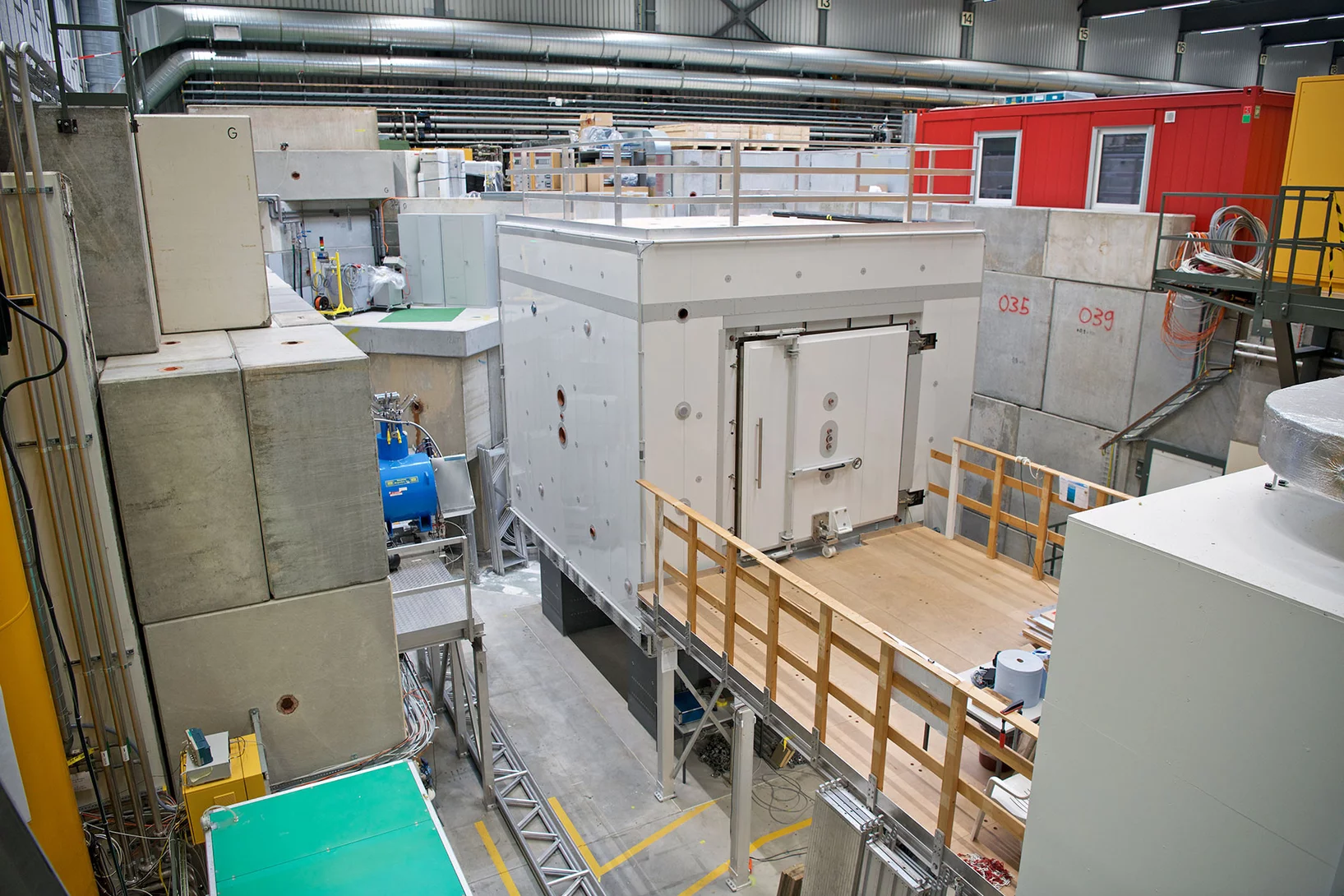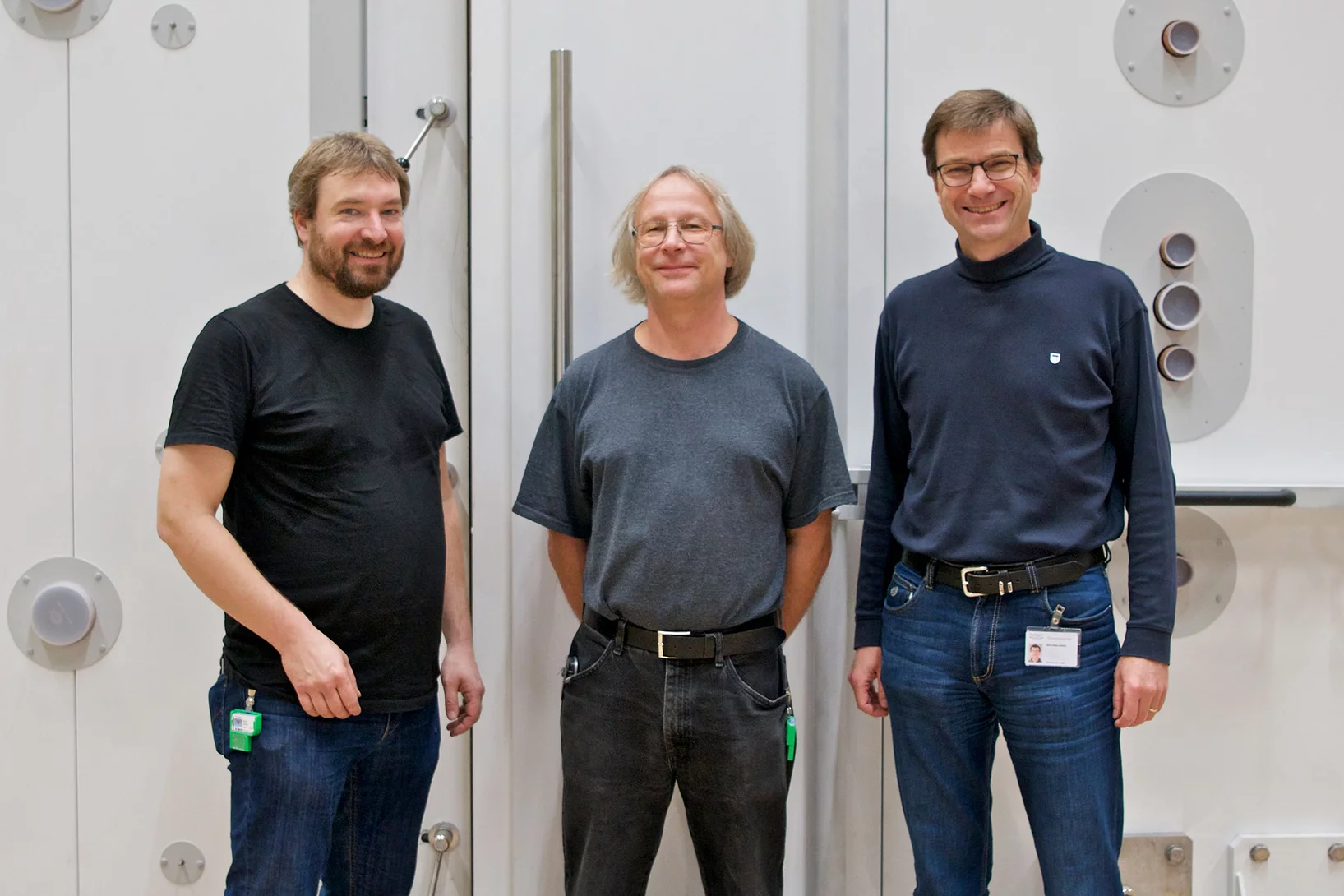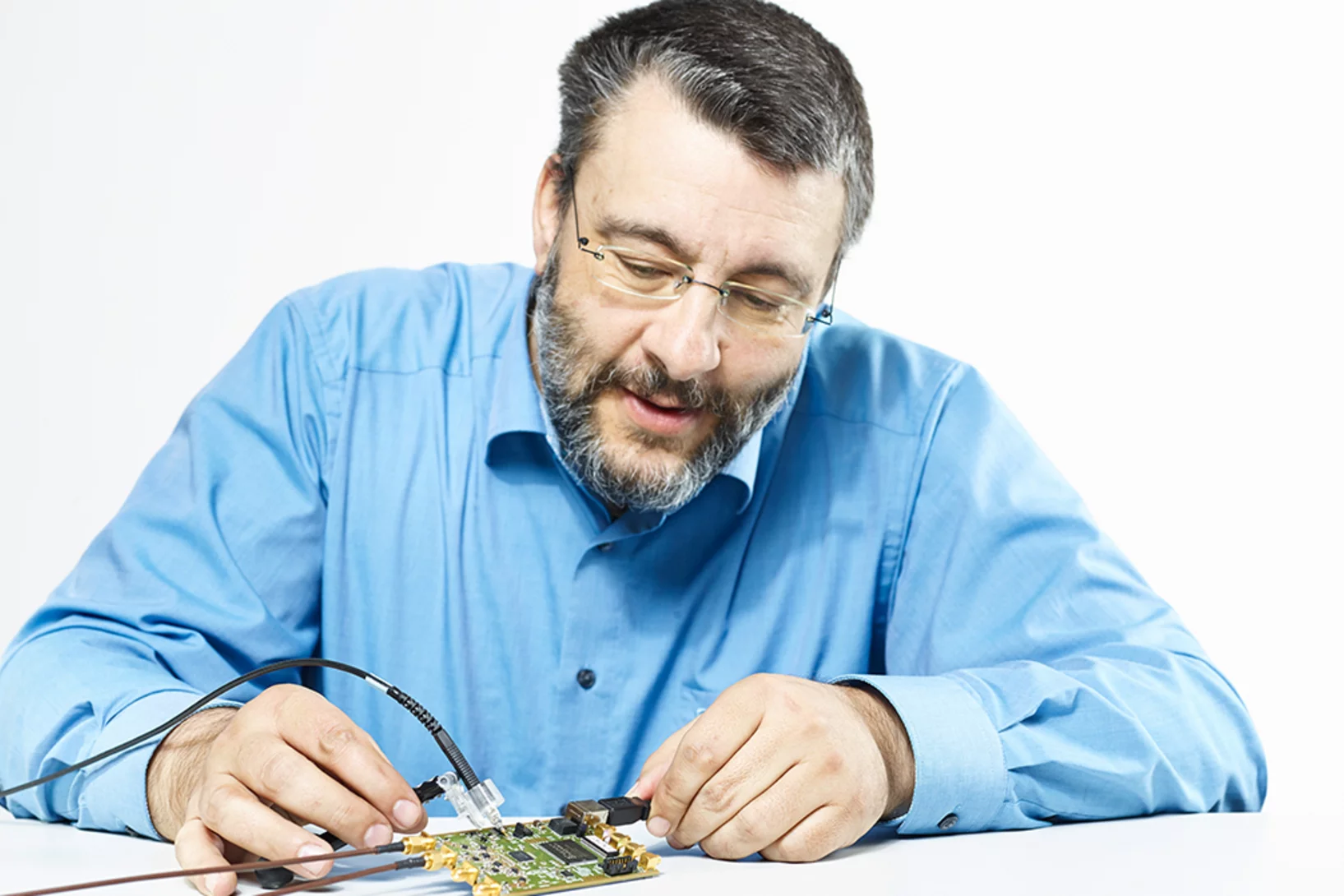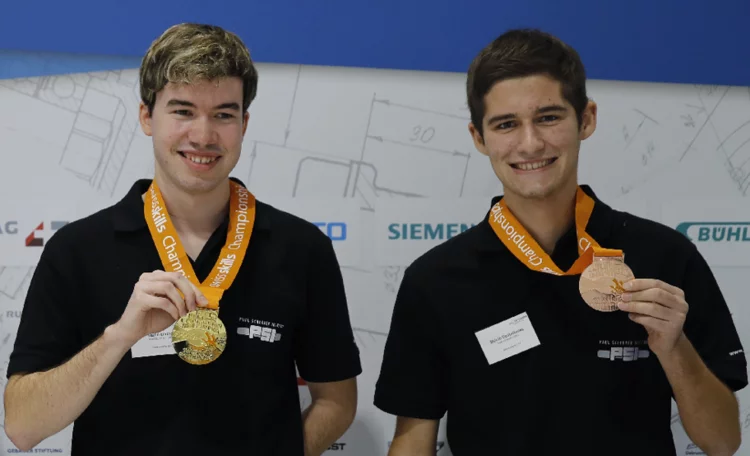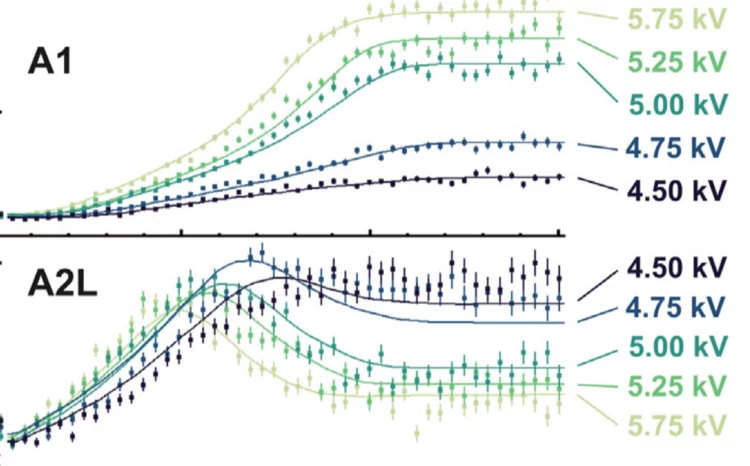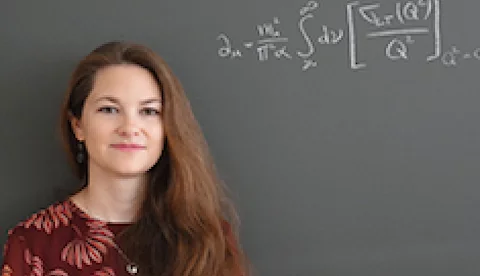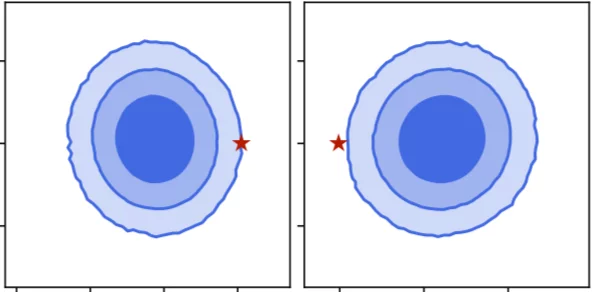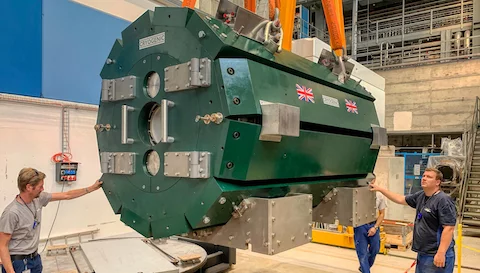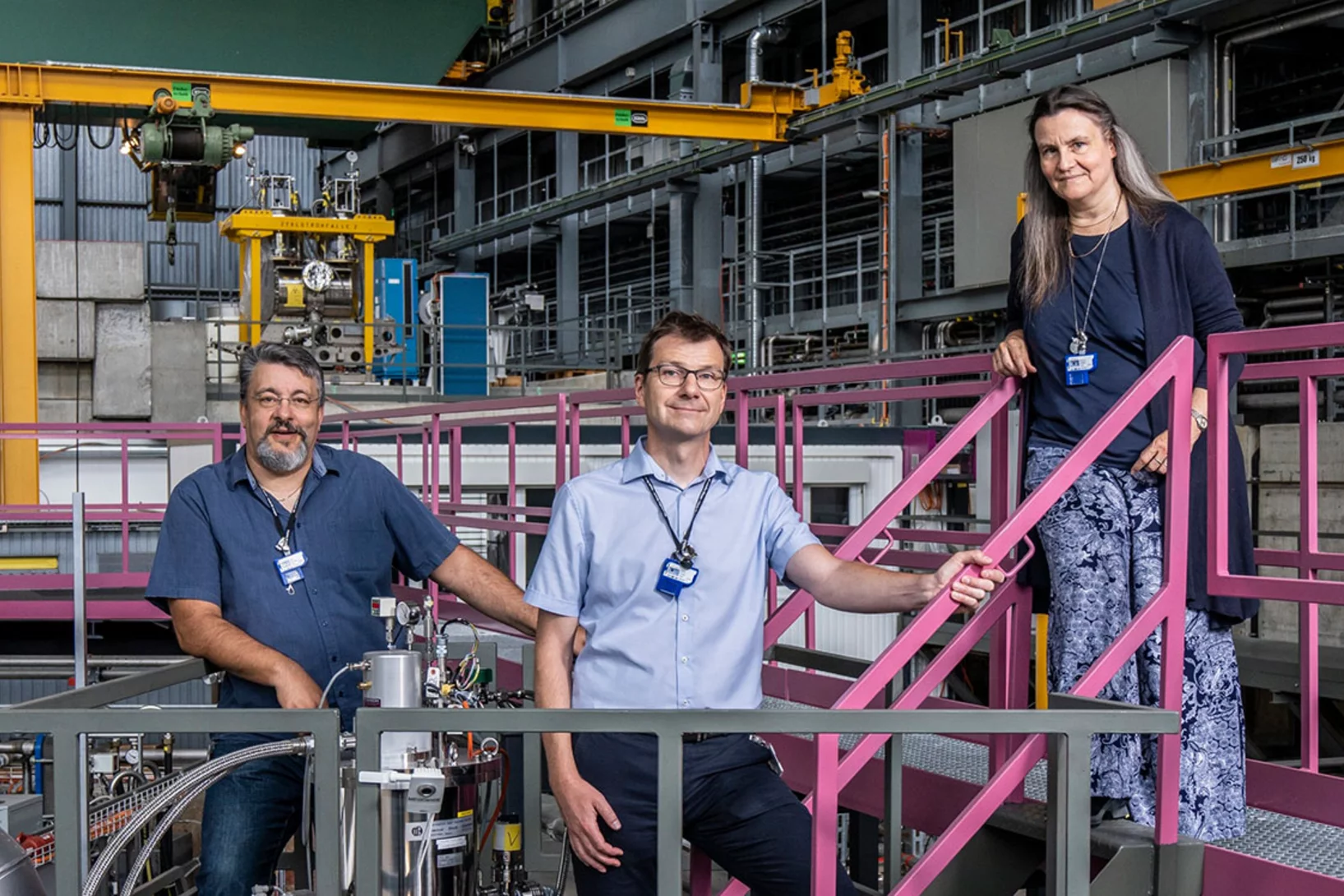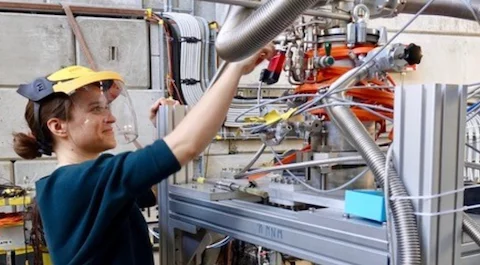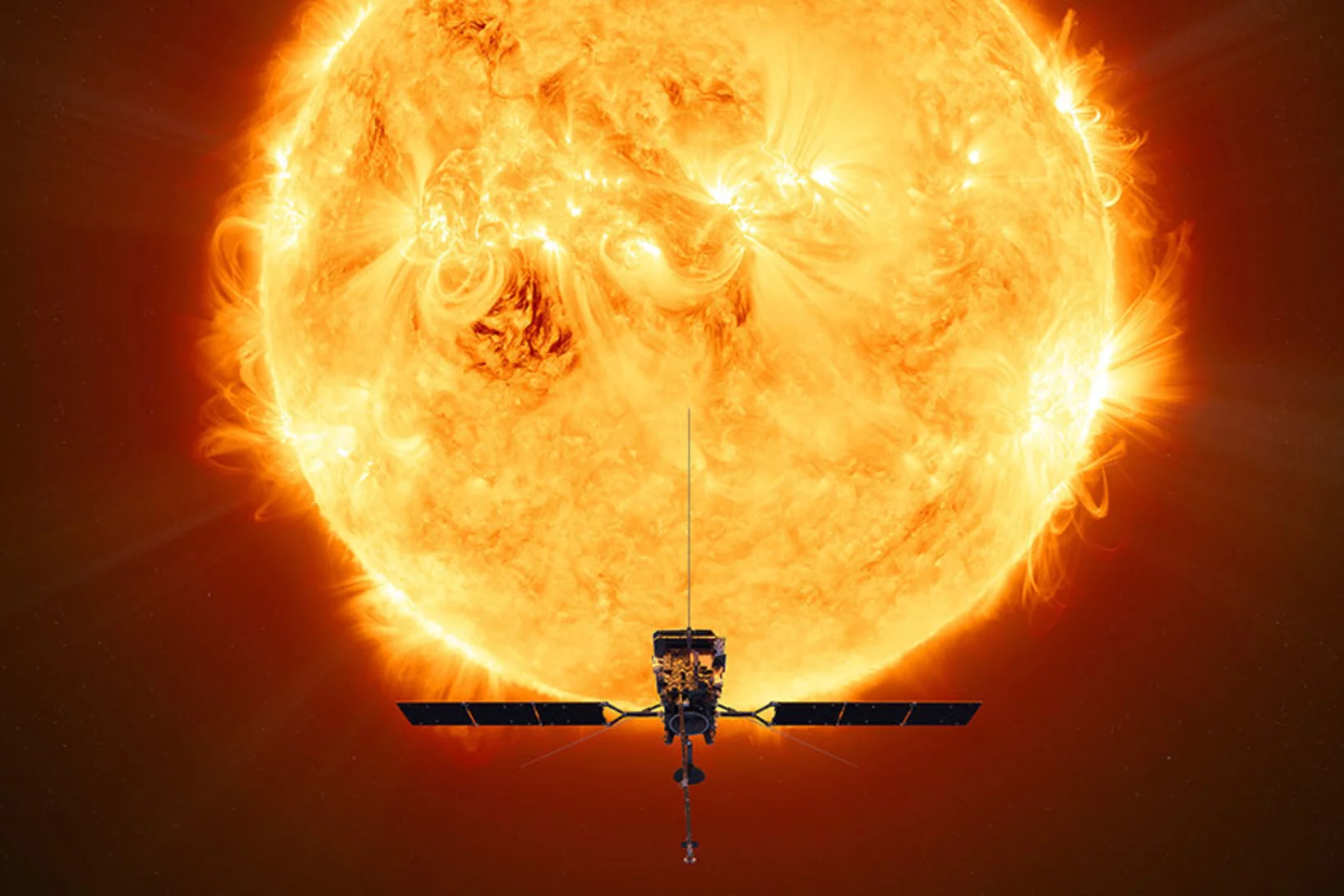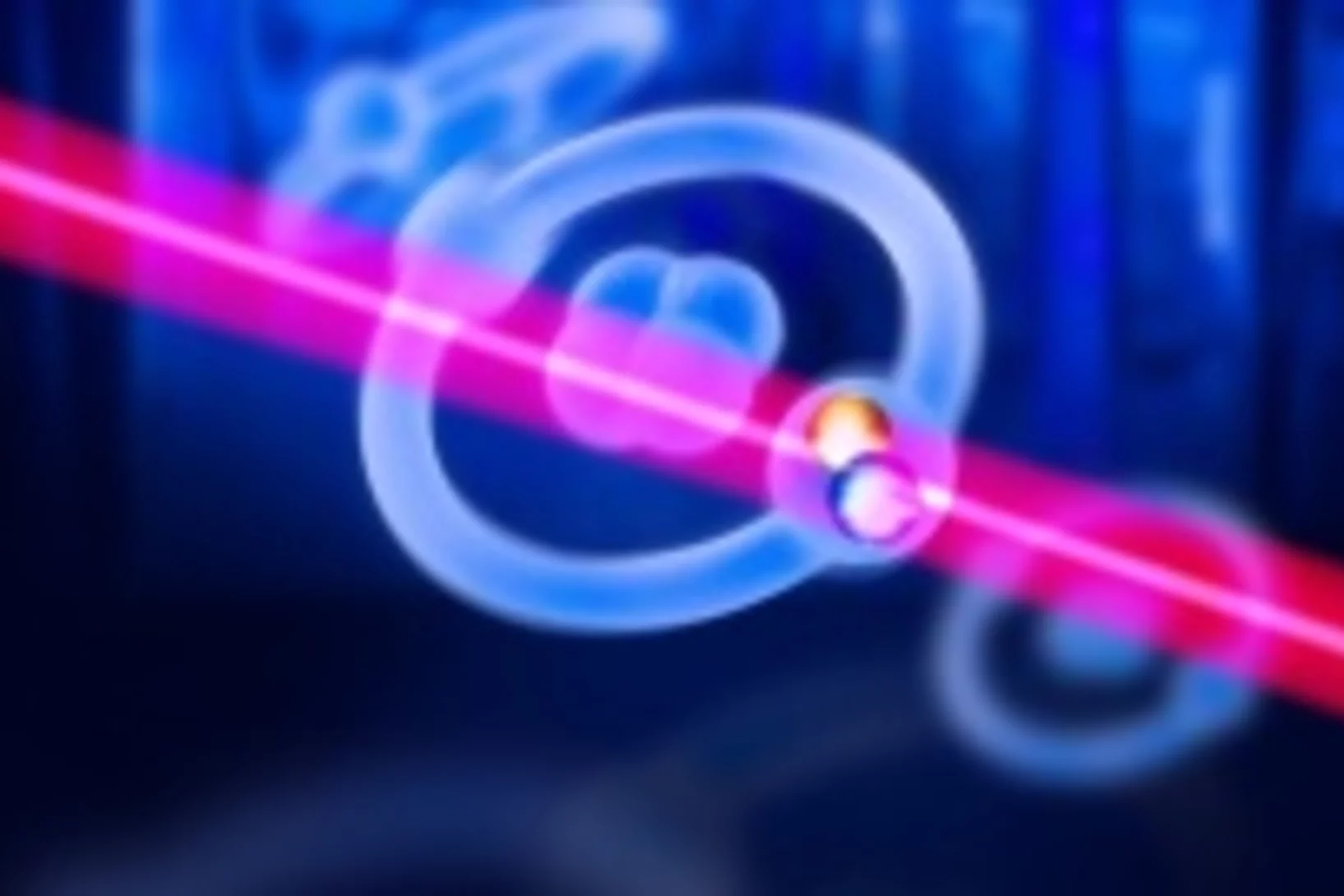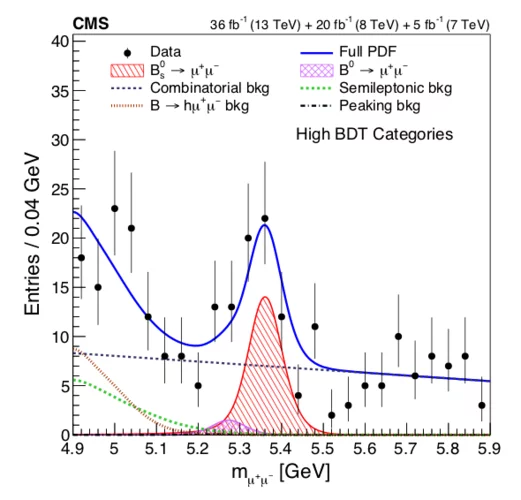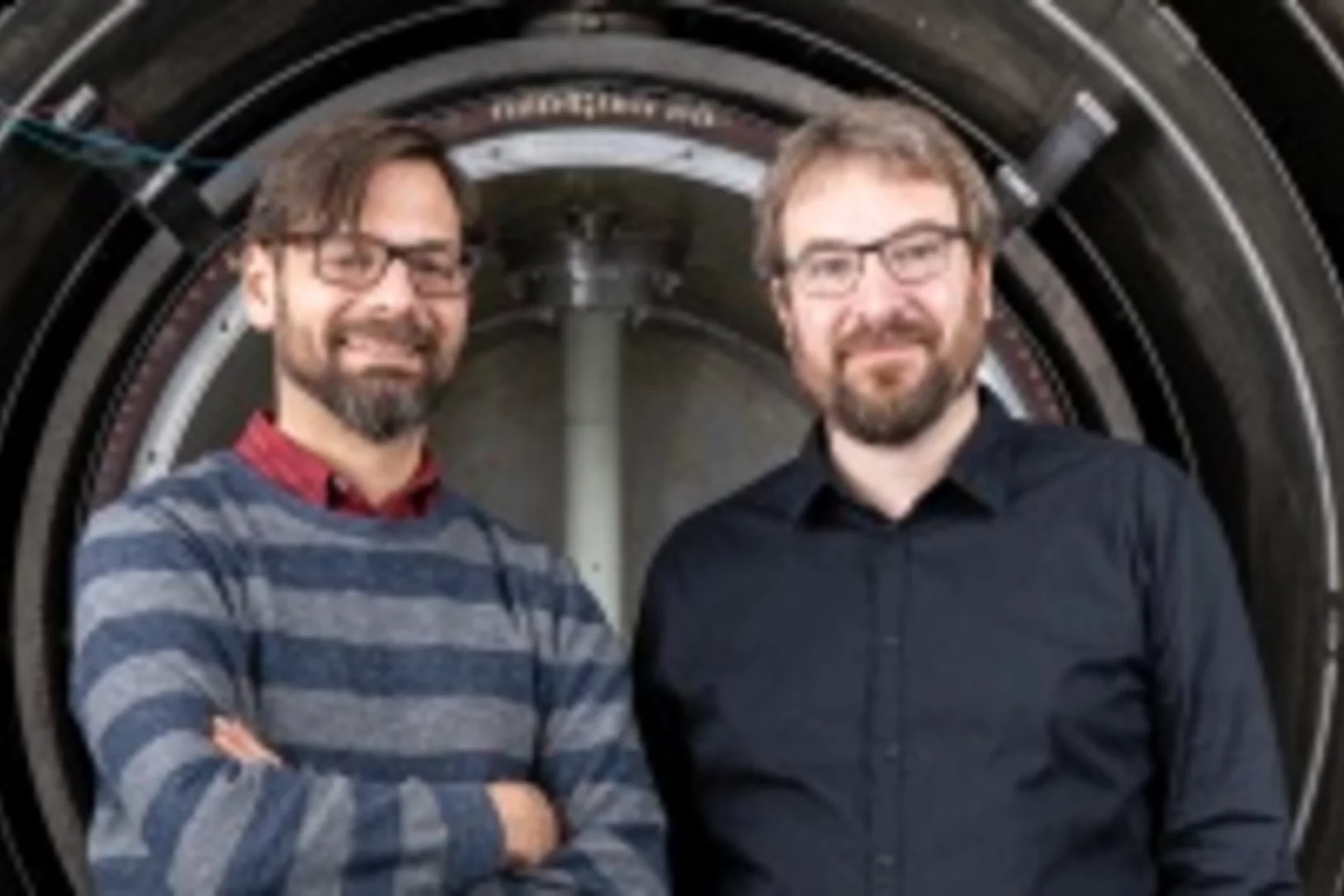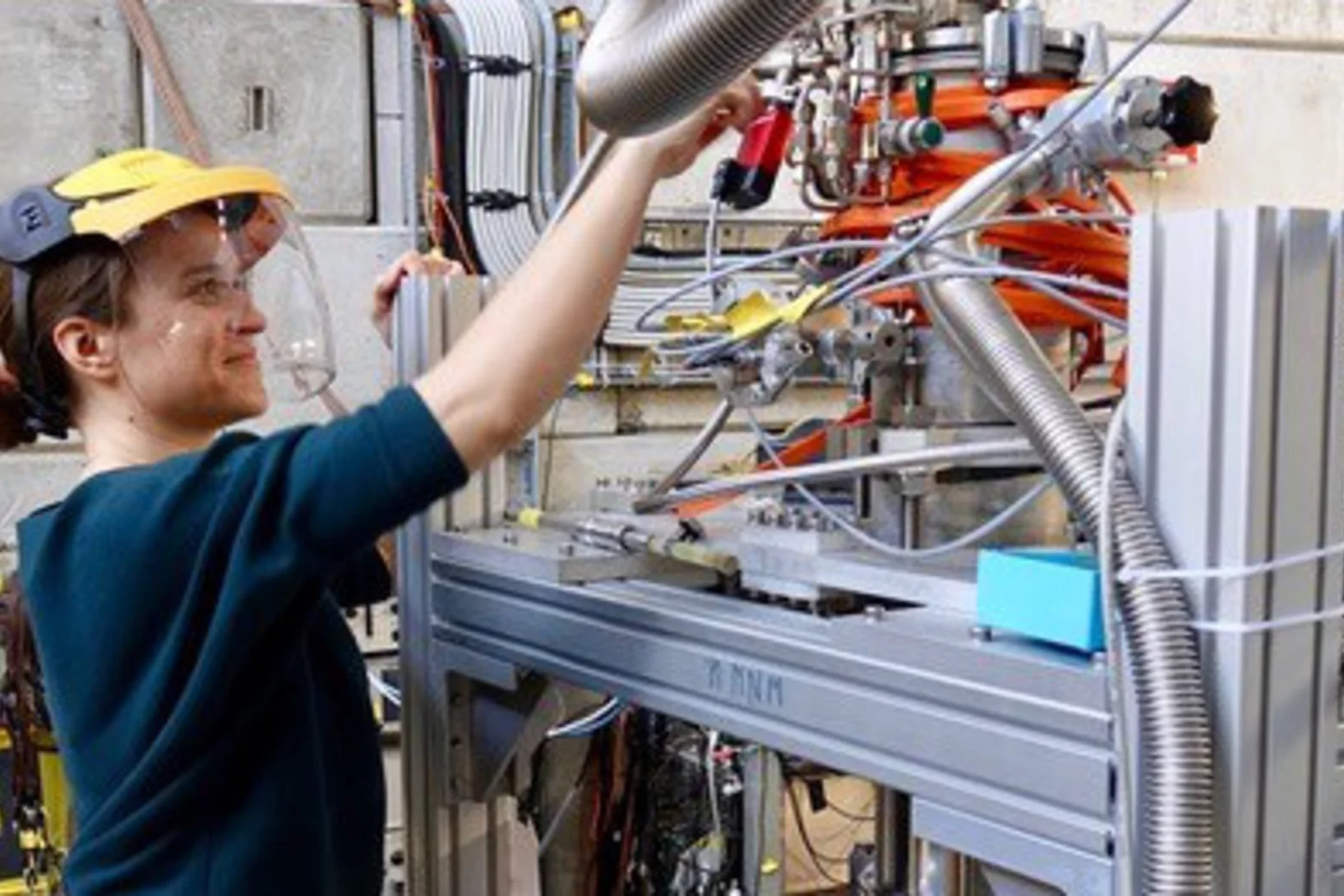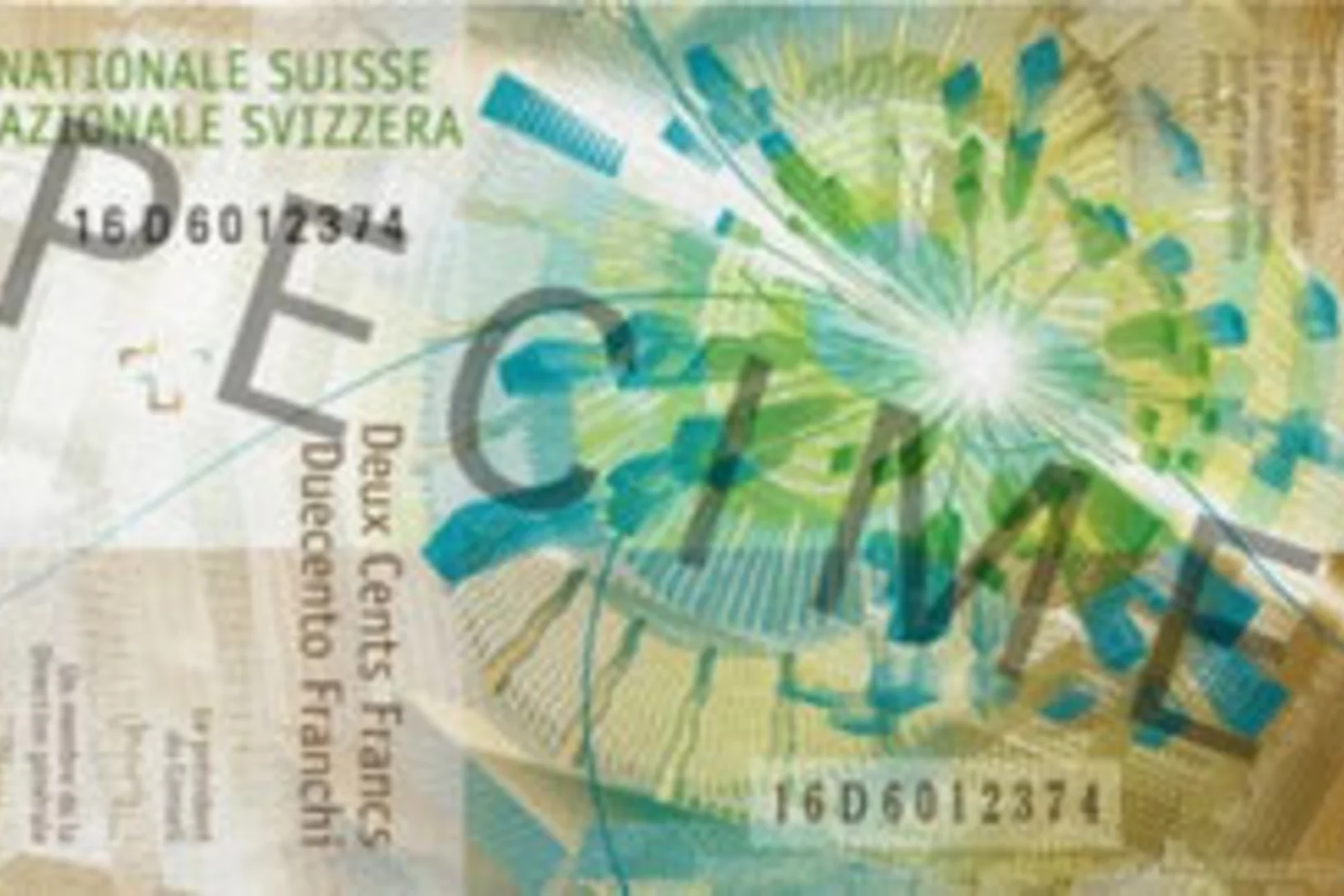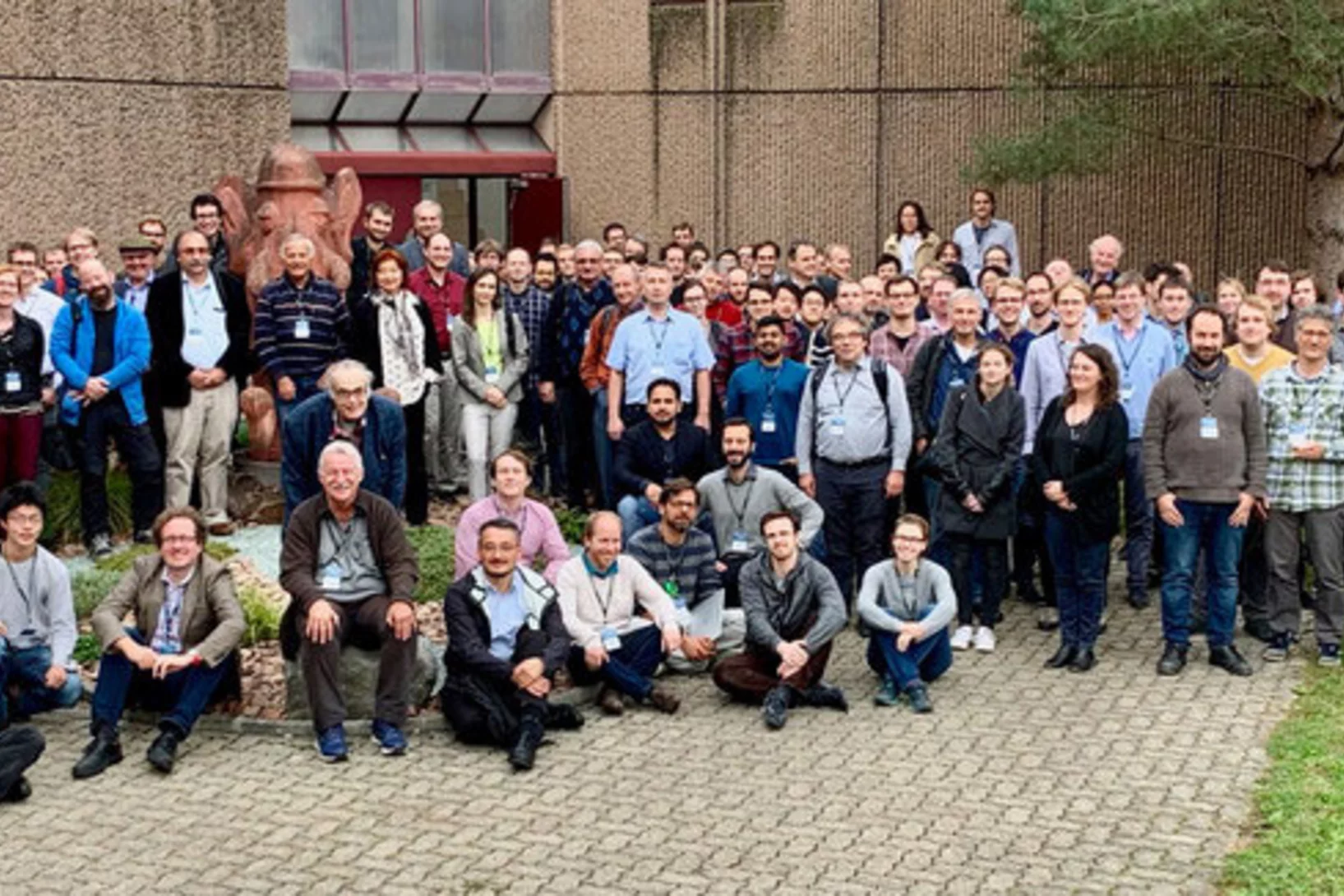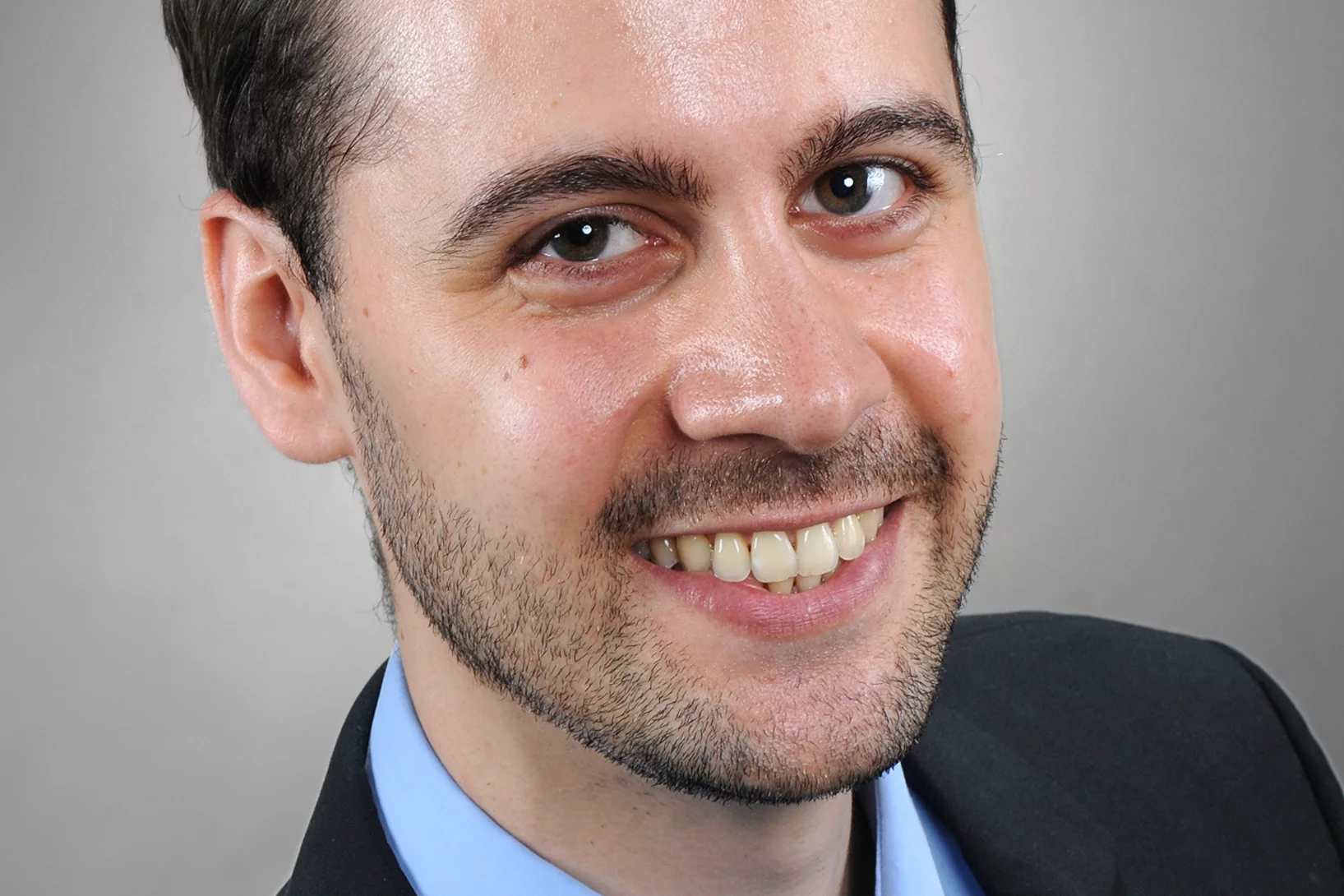Show filters
The Running Bottom Quark Mass and the Higgs Boson
We present a new measurement of the bottom quark mass in the MS scheme at the renormalization scale of the Higgs boson mass from measurements of Higgs boson decay rates at the LHC: mb (mH) = 2.6 +0.36 -0.31 GeV. The measurement has a negligible theory uncertainty and excellent prospects to improve at the HL-LHC and a future Higgs factory.
Antiprotons in superfluid helium: a new way for sensitive measurements of antimatter
Scientists, publishing in Nature, have found that a hybrid antimatter-matter atom behaves in an unexpected way when submerged in superfluid helium.
2 Millionen Förderung für die Suche nach neuer Physik
Philipp Schmidt-Wellenburg wird an einer Myonenstrahllinie des PSI ein neuartiges Experiment aufbauen.
Aldo Antognini Adjunct Professor at ETHZ
Aldo Antognini, currently lecturer and senior scientist at both ETH Zurich and the Laboratory for Particle Physics at NUM/PSI was awarded the title of Adjunct Professor at ETH Zurich.
Higgs-boson pair production at LHC: reliable theoretical uncertainties
Researchers at PSI have refined the theoretical prediction for the pair production of Higgs bosons at the LHC and re-analized the related uncertainties resulting in sizable contributions neglected before. This process will be highly relevant at the high-luminosity run of the LHC to measure the Higgs potential directly.
Update on the Status of HIMB
A workshop to discuss and further develop the science case for the High Intensity Muon Beams (HIMB) has been held.
Das Bindeglied zwischen Theorie und Experiment
Ohne fundamentale Konstanten gibt es keine Physik.
Silver medal at the EuroSkills
Silver medal for Mario Liechti at the EuroSkills in Graz, Austria.
CHRISP — All the key results in one place
A specialSciPost volume, entitled “Review of Particle Physics at PSI”, has recently been completed.
Die Schweizer Forschungsinfrastruktur für Teilchenphysik CHRISP
Forschende suchen nach Abweichungen im gängigen Standardmodell der Physik und wollen herausfinden, wie unser Universum aufgebaut ist.
Size of helium nucleus measured more precisely than ever before
In experiments at the Paul Scherrer Institute PSI, an international research collaboration has measured the radius of the atomic nucleus of helium five times more precisely than ever before. The researchers are publishing their results today in the journal Nature.
Grösse des Heliumkerns genauer gemessen als je zuvor
In Experimenten am Paul Scherrer Institut PSI hat eine internationale Forschungszusammenarbeit den Radius des Atomkerns von Helium fünfmal präziser gemessen als jemals zuvor. Mithilfe des neuen Werts lassen sich fundamentale physikalische Theorien testen.
Magnetically shielded from the rest of the world
The shielding room in which the n2EDM experiment is expected to clarify whether the neutron has a measurable electric dipole moment or not.
(Photo: Paul Scherrer Institute/Markus Fischer)
Magnetisch abgeschirmt vom Rest der Welt
Am Paul Scherrer Institut PSI haben Forschende gemeinsam mit einer Firma einen Raum konstruiert, der einer der am besten magnetisch abgeschirmten Orte auf der Erde ist. Mit seiner Hilfe wollen sie einige der letzten Rätsel der Materie lösen und der Antwort auf eine fundamentale Frage näher kommen: Warum gibt es überhaupt Materie und damit auch uns selbst?
Prestigious IEEE award for Stefan Ritt
Stefan Ritt, leader of the Muon Physics group at the Laboratory for Particle Physics, has received today the prestigious IEEE Emilio Gatti Radiation Instrumentation Technical Achievement Award, for "contributions to the development and democratization of ultra-high-speed digitizers”.
On the winners’ podium at the SwissSkills professional championships
With Mario Liechti (gold) and Melvin Deubelbeiss (bronze) two of our electronics apprentices achieved a place on the winners’ podium at the SwissSkills 2020. The SwissSkills are the Swiss professional championships organized by the leading industry associations. The final competition took place October 27 - 30, 2020 at Schindler Elevators in Ebikon.
Demonstration of Muon-Beam Transverse Phase-Space Compression
We demonstrate efficient transverse compression of a 12.5 MeV=c muon beam stopped in a helium gas target featuring a vertical density gradient and crossed electric and magnetic fields. The muon stop distribution extending vertically over 14 mm was reduced to a 0.25 mm size (rms) within 3.5 μs. The simulation including cross sections ...
Swiss National Science Foundation Ambizione grant for Franziska Hagelstein
Franziska Hagelstein has been awarded a Swiss National Science Foundation Ambizione grant with PSI as host institution. She joined the particle theory group (NUM, Laboratory of Particle Physics LTP) in October 2020. In the near future she will be accompanied by a PhD student.
Global Fit to Modified Neutrino Couplings and the Cabibbo-Angle Anomaly
Recently, discrepancies of up to 4σ between the different determinations of the Cabibbo angle were observed. In this context, we point out that this “Cabibbo-angle anomaly” can be explained by lepton flavor universality violating new physics in the neutrino sector. However, modified neutrino couplings to standard model gauge bosons also affect many other observables sensitive to lepton flavor universality violation, which have to be taken into account in order to assess the viability of this explanation.
Mu3e magnet arrived at PSI
After almost three years of planning, design and construction, the 31-ton, 2.6 Tesla superconducting magnet for the Mu3e experiment arrived today at PSI. The magnet delivery is an important milestone in the Mu3e experiment at the Laboratory of Particle Physics LTP, which will search for New Physics in muon decays over the next years.
Auf der Suche nach einer neuen Physik
Mit dem Hochintensitäts-Protonenbeschleuniger HIPA erzeugt das Paul Scherrer Institut Elementarteilchen, um zu klären, wie das Universum aufgebaut ist. Mithilfe von Pionen, Myonen und Neutronen führen die Forschenden Experimente durch, um das Standardmodell der Elementarteilchenphysik zu überprüfen.
Anna Sótér appointed Tenure Track Assistant Professor at ETH Zurich
Anna Sótér, currently Lecturer and SNSF Ambizione Fellow at ETH Zurich, formerly member of the PSI Laboratory for Particle Physics and member of the PSI Fellow program, has been appointed Tenure Track Assistant Professor of Low Energy Particle Physics. Anna Sótér’s research is in the area of exotic atoms, where particle physics, atomic physics and quantum optics meet.
Zur Sonne und noch viel weiter
Das PSI beteiligt sich an Projekten der Weltraumforschung. Damit erweitert sich nicht nur das Wissen über unsere astronomische Heimat, sondern festigt sich auch das Renommee der Schweiz als zuverlässiger Entwickler von anspruchsvollem Weltraumequipment.
Langlebiges pionisches Helium: exotische Materie erstmals experimentell nachgewiesen
Exotische Atome, in denen Elektronen durch andere Teilchen ersetzt werden, ermöglichen tiefe Einblicke in die Quantenwelt. Nach acht Jahren gelang einer internationalen Gruppe von Forschenden an der Pionenquelle des PSI ein schwieriges Experiment: Sie schufen ein künstliches Atom, sogenanntes «pionisches Helium».
Measurement of properties of Bs0 → μ+μ− decays and search for B0 → μ+μ− with the CMS experiment
Results are reported for the B0s → μ+μ− branching fraction and effective lifetime and from a search for the decay B0 → μ+μ−. The analysis uses a data sample of proton-proton collisions accumulated by the CMS experiment in 2011, 2012, and 2016, with center-of-mass energies (integrated luminosities) of 7TeV (5fb−1), 8TeV (20fb−1),and 13TeV (36fb−1).
Dem Rätsel der Materie auf der Spur
Forschende haben an der Quelle für ultrakalte Neutronen des PSI eine Eigenschaft des Neutrons so genau wie noch nie vermessen: sein elektrisches Dipolmoment. Denn bis heute wird nach einer Erklärung gesucht, weshalb es nach dem Urknall mehr Materie als Antimaterie gab.
Anna Sótér starts Ambizione fellowship
Anna Sótér has started an Ambizione fellowship at ETH Zurich and PSI. Her project is dedicated to developing a novel source of cold muonium atoms, which will be used for a new interferometry experiment that enables testing the weak equivalence principle by directly probing gravitational interaction of antimatter.
Fascinating colloquium about the 200 Swiss frank banknote
The designers of the new Swiss banknote series together with the scientific advisor Günther Dissertori from ETHZ gave a fascinating PSI-colloquium on the 200 Swiss Frank banknote.
Workshop on the Physics of Fundamental Symmetries and Interactions
The 5th Workshop on the Physics of Fundamental Symmetries and Interactions (PSI2019) took place from 20 to 25 October 2019 at PSI, bringing together 200 scientists from all over the world working on some of today’s most precise particle-physics experiments at the low-energy frontier.
SNSF Ambizione Grant for Max Zoller
Max Zoller has been awarded a Swiss National Science Foundation
Ambizione grant with PSI as host institution.


